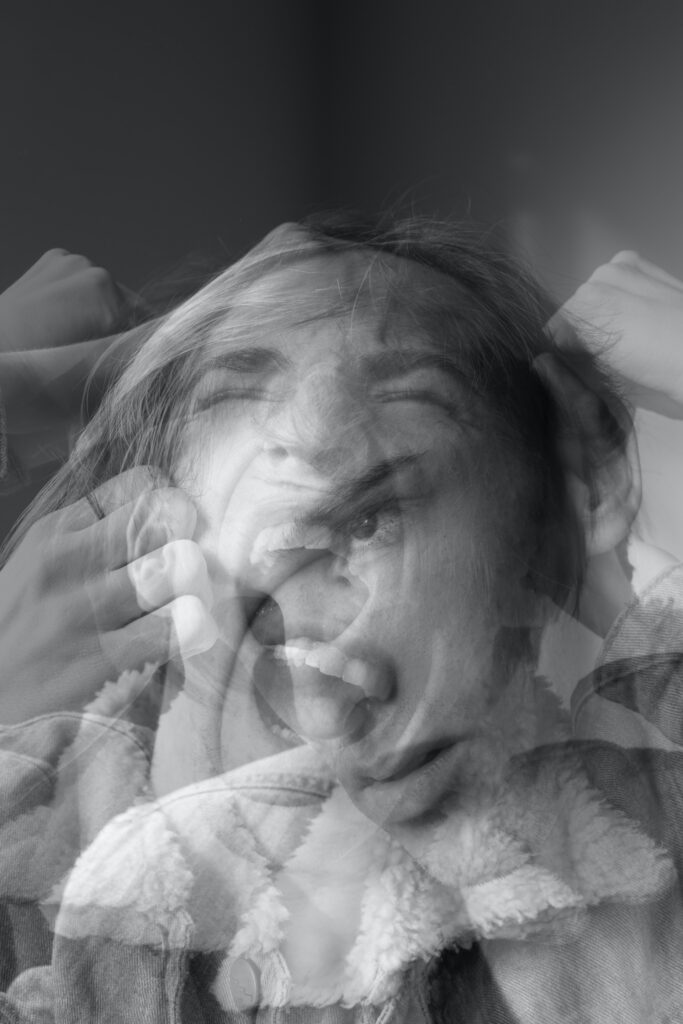Understanding and Alleviating Lower Back Pain
Lower back pain is a common ailment that affects people of all ages and backgrounds. Whether it’s due to poor posture, sedentary lifestyles, or underlying medical conditions, the discomfort and limitations it brings can significantly impact daily life. In this article, we’ll explore the causes of lower back pain and provide practical tips to manage and prevent it.
- Causes of Lower Back Pain:
a. Poor Posture: Prolonged periods of sitting or standing with improper posture can strain the muscles and ligaments in the lower back.
b. Muscle Strain: Overexertion, lifting heavy objects incorrectly, or sudden movements can lead to muscle strains in the lower back.
c. Sedentary Lifestyle: Lack of physical activity weakens the muscles that support the spine, making it more susceptible to pain.
d. Herniated Discs: When the soft tissue between the vertebrae ruptures, it can put pressure on nearby nerves, causing pain.
e. Arthritis: Conditions like osteoarthritis or rheumatoid arthritis can affect the spine, leading to lower back pain. - Symptoms of Lower Back Pain:
a. Dull, aching pain in the lower back
b. Sharp, shooting pain that may radiate down the legs
c. Stiffness and limited range of motion
d. Difficulty standing up straight or walking - Preventive Measures:
a. Maintain Proper Posture: Be mindful of your posture while sitting, standing, and lifting objects. Use ergonomic chairs and desks to support a healthy spine alignment.
b. Regular Exercise: Engage in low-impact exercises like walking, swimming, or yoga to strengthen the core muscles that support the lower back.
c. Weight Management: Maintain a healthy weight to reduce unnecessary stress on the lower back.
d. Lift Safely: When lifting heavy objects, bend your knees, not your back, and use your legs to lift while keeping the object close to your body. - Home Remedies for Relief:
a. Hot and Cold Therapy: Apply a hot or cold pack to the affected area to reduce inflammation and alleviate pain.
b. Over-the-Counter Medications: Non-prescription pain relievers, such as ibuprofen or acetaminophen, can provide temporary relief.
c. Stretching and Strengthening Exercises: Gentle stretching and strengthening exercises can improve flexibility and alleviate muscle tension. - When to Seek Professional Help:
a. Persistent Pain: If the pain persists for more than a few weeks despite home remedies.
b. Radiating Pain: Pain that radiates down the legs, accompanied by tingling or numbness.
c. Other Symptoms: If lower back pain is accompanied by other concerning symptoms, such as fever or unexplained weight loss. - Medical Treatments:
a. Physical Therapy: A physical therapist can design a tailored exercise program to address specific issues contributing to lower back pain.
b. Medication: In some cases, prescription medications or muscle relaxants may be recommended.
c. Surgical Intervention: For severe cases or when conservative treatments fail, surgery may be considered.
Lower back pain is a prevalent issue, but with proactive measures, lifestyle adjustments, and timely medical intervention when necessary, individuals can manage and alleviate this discomfort, promoting a healthier and more active life. Always consult with healthcare professionals for personalized advice based on your specific situation.
Attachment Matters: The Surprising Role in Your Pain and Illness Journey
Attachment, the emotional bond formed between individuals, particularly between infants and their primary caregivers, plays a significant role in various aspects of human development and well-being. Research has suggested that attachment patterns may have implications for how individuals experience and cope with pain and illness throughout their lives.
Here are several ways in which attachment can influence pain and illness:
- Early Attachment and Stress Response: Early attachment experiences can shape an individual’s stress response system. Securely attached individuals often develop a more adaptive stress response, while insecurely attached individuals may be more prone to heightened stress reactions. Chronic stress can contribute to the development or exacerbation of pain and illness.
- Emotional Regulation and Pain Perception: Secure attachment is associated with better emotional regulation skills. Individuals with secure attachment tend to have healthier coping mechanisms, which can positively impact how they perceive and manage pain. In contrast, insecure attachment may be linked to maladaptive coping strategies, potentially intensifying the experience of pain.
- Psychosomatic Connection: The psychosomatic connection between emotions and physical health is well-documented. Attachment experiences may influence the manifestation of physical symptoms and illnesses. For example, unresolved emotional issues stemming from early attachment disruptions could contribute to psychosomatic symptoms or somatization disorders.
- Impact on Health Behaviors: Attachment patterns may influence health-related behaviors. Securely attached individuals may be more likely to engage in health-promoting behaviors, such as regular exercise and a balanced diet. Insecurely attached individuals, on the other hand, may be prone to behaviors that increase the risk of illness, such as substance abuse or poor self-care.
- Social Support and Recovery: Attachment security is often associated with the capacity to form and maintain supportive social relationships. Social support is a crucial factor in coping with pain and illness. Securely attached individuals may be better equipped to seek and receive support during times of illness, facilitating a more positive recovery experience.
- Interplay with Chronic Pain Conditions: Attachment styles may influence the experience and management of chronic pain conditions. Individuals with insecure attachment may be more vulnerable to the impact of chronic pain on their overall well-being, mental health, and social functioning.
Understanding the role of attachment in pain and illness underscores the importance of a holistic approach to healthcare. Integrating psychological and social factors, including attachment history, into the assessment and treatment of pain and illness can contribute to more comprehensive and personalized care.
It’s important to note that attachment is a complex and dynamic aspect of human relationships, and individual experiences can vary widely. If individuals find that their attachment patterns are influencing their well-being in a negative way, seeking support from mental health professionals can be beneficial in promoting healthier patterns of attachment and coping.
The Role of Endorphins in Pain Management and Relief
Pain is a universal human experience, but our bodies have a built-in mechanism for alleviating it: endorphins. These natural chemicals act as the body’s pain relievers, providing a vital tool for managing discomfort. In this article, we’ll delve into the fascinating world of endorphins, exploring how they work and their role in pain management and relief.
Understanding Endorphins
Endorphins, short for “endogenous morphine,” are neurotransmitters produced by the body’s central nervous system and pituitary gland. They are released in response to stress and pain, acting as natural painkillers. Endorphins bind to specific receptors in the brain and spinal cord, inhibiting the transmission of pain signals and promoting feelings of well-being.
The Pain-Relief Mechanism
When you experience pain, whether it’s from an injury or a chronic condition, your body’s endorphin system kicks into action. Here’s how it works:
- Pain Signal: When your body detects pain, specialized nerve cells called nociceptors send signals to the brain.
- Endorphin Release: In response to these pain signals, your body releases endorphins. This release can occur during various activities, such as exercise, laughter, or even eating spicy foods.
- Pain Inhibition: Endorphins bind to receptors in the brain and spinal cord, effectively blocking the transmission of pain signals. This process reduces the perception of pain and creates a sense of relief and well-being.

Exercise and Endorphins
One of the most well-known ways to trigger the release of endorphins is through exercise. This phenomenon is often referred to as the “runner’s high.” When you engage in physical activity, especially aerobic exercise like running or brisk walking, your body increases its production of endorphins. This natural pain relief can explain why exercise is recommended as a complementary approach to managing chronic pain conditions.
Chronic Pain Management
Chronic pain conditions, such as fibromyalgia, arthritis, and lower back pain, can significantly impact one’s quality of life. While endorphins provide a natural mechanism for pain relief, they are not always sufficient to manage chronic pain on their own. In such cases, healthcare professionals may recommend a combination of treatments, including medication, physical therapy, and lifestyle adjustments.
Conclusion
Endorphins are the body’s built-in pain relievers, playing a crucial role in managing discomfort and promoting a sense of well-being. Understanding how these natural chemicals work can empower individuals to explore strategies for pain management, such as regular exercise, mindfulness practices, and other activities that stimulate endorphin release. While endorphins are valuable allies in pain relief, it’s essential to consult with healthcare professionals to develop comprehensive pain management plans tailored to specific needs and conditions.
Why do we escape our emotions?
In the face of discomfort or overwhelming emotions, many individuals develop a proclivity for escaping their feelings as a coping mechanism. This inclination to evade emotions can manifest in various forms, such as distraction, denial, or engaging in activities that provide a temporary reprieve from the intensity of their emotional experiences. The human psyche, in its complexity, often seeks refuge from the challenges posed by internal turmoil.
Below are several prevalent explanations for why individuals tend to avoid confronting their emotions:
- Avoidance of Pain: Emotions can be intense and uncomfortable, especially when they involve sadness, anger, fear, or grief. Escaping emotions may serve as a way to avoid facing and experiencing this pain, seeking temporary relief or distraction instead.
- Fear of Vulnerability: Emotions can make us feel vulnerable and exposed. Some individuals may avoid their emotions to protect themselves from being hurt or judged by others. They may fear being seen as weak or fear rejection, leading them to suppress or deny their emotions.
- Lack of Emotional Skills: Not everyone has been taught or developed healthy ways to process and manage emotions effectively. Without the necessary skills or tools, individuals may resort to escaping or numbing their emotions as a way to cope with them.
- Cultural and Social Conditioning: Societal and cultural norms can influence how emotions are perceived and expressed. In some cultures or social environments, displaying certain emotions may be discouraged or stigmatized. This conditioning can contribute to individuals suppressing or escaping from their emotions.
- Learned Behaviors: People may adopt patterns of emotional escape based on their upbringing or past experiences. If they witnessed others avoiding or suppressing emotions during their formative years, they may mimic those patterns as adults.
- Overwhelm and Lack of Coping Strategies: When emotions become overwhelming or feel too intense, individuals may feel unequipped to manage them effectively. In such instances, escaping from emotions may seem like the only available option to regain a sense of control.
- Habitual Coping Mechanisms: Escaping emotions can become a habitual coping mechanism that individuals have relied on for a long time. It may have provided temporary relief in the past, reinforcing the tendency to repeat the behavior.

While escaping emotions can offer temporary relief, it’s important to note that avoiding or suppressing emotions can have negative consequences in the long run. Unresolved emotions can accumulate and impact mental and emotional well-being, relationships, and overall life satisfaction.
Developing healthy coping strategies and emotional resilience can help individuals face and process their emotions in a constructive manner. This may involve seeking support from trusted individuals, practicing self-reflection, learning emotional regulation techniques, or working with mental health professionals to develop healthier ways of managing and expressing emotions.
What Is an Invisible Illness?
An invisible illness, also known as an invisible disability or hidden disability, refers to a medical condition or health disorder that is not immediately apparent to others by looking at the person who has it. Unlike visible illnesses or disabilities, which may manifest as obvious physical symptoms or impairments, invisible illnesses are characterized by symptoms that are not readily visible to the naked eye. These conditions often affect a person’s overall health, well-being, and ability to function, but the individuals who have them may appear healthy on the outside.
Examples of invisible illnesses include:
- Chronic pain conditions: Conditions like fibromyalgia, chronic fatigue syndrome, and certain types of arthritis can cause persistent pain and fatigue without any visible physical signs.
- Mental health disorders: Conditions such as depression, anxiety disorders, bipolar disorder, and post-traumatic stress disorder (PTSD) are often invisible but can significantly impact a person’s mental and emotional well-being.
- Autoimmune diseases: Diseases like lupus, multiple sclerosis, and Crohn’s disease can have internal symptoms that are not readily apparent but can lead to serious health issues.
- Neurological disorders: Conditions like epilepsy, migraines, and some forms of dysautonomia can cause unpredictable symptoms that are not visible to others.
- Chronic gastrointestinal disorders: Conditions like irritable bowel syndrome (IBS), inflammatory bowel disease (IBD), and celiac disease can lead to digestive problems and discomfort without external signs.
- Allergies and sensitivities: Some individuals have severe allergies or sensitivities to certain substances, such as food, pollen, or chemicals, which can lead to health issues even if there are no visible symptoms.
- Chronic infections: Certain infections, like Lyme disease or chronic viral infections, may not produce visible symptoms but can have a significant impact on a person’s health.
Living with an invisible illness can be challenging because others may not fully understand or appreciate the extent of the person’s health issues. This lack of visibility can lead to misconceptions, stigma, and difficulties in accessing appropriate support and accommodations. It’s essential to raise awareness about invisible illnesses and promote empathy and understanding to better support individuals who are living with them.
What Does Psychosomatic Mean?
“Psychosomatic” is a term used in medicine and psychology to describe a condition or symptom that has both psychological and physical components. It suggests a connection between a person’s mental or emotional state and their physical health. Here are key points to understand about the term “psychosomatic”:
- Mind-Body Connection: Psychosomatic conditions or symptoms imply that mental or emotional factors can influence, exacerbate, or even cause physical health issues. In other words, it highlights the interconnectedness of the mind and body.
- Psychological Origin: In some cases, psychosomatic symptoms may primarily arise from psychological distress or emotional factors. For example, chronic stress, anxiety, or unresolved emotional trauma can manifest as physical symptoms like headaches, stomachaches, or muscle tension.
- No Organic Cause: Psychosomatic symptoms often occur when there is no identifiable organic or physical cause for the symptoms. Medical evaluations may not reveal any underlying disease or structural abnormality to explain the physical complaints.
- Real Symptoms: It’s essential to note that psychosomatic symptoms are not “imagined” or “fake” symptoms. People experiencing psychosomatic symptoms genuinely feel physical discomfort or pain, even though the root cause may be emotional or psychological.
- Treatment Approach: Treatment for psychosomatic conditions typically involves addressing both the psychological and physical aspects. This may include psychotherapy or counseling to address underlying emotional issues, stress management techniques, and sometimes medication to alleviate physical symptoms.
- Common Examples: Common examples of psychosomatic symptoms or conditions include tension headaches, irritable bowel syndrome (IBS), chest pain related to anxiety or panic attacks, and certain skin conditions exacerbated by stress.
- Individual Variability: The way psychosomatic symptoms manifest can vary widely from person to person. Some individuals may be more prone to physical symptoms in response to emotional stress, while others may experience minimal physical impact.
- Holistic Approach: Many healthcare providers advocate for a holistic approach to health, recognizing the importance of both physical and mental well-being in overall health. Addressing psychosomatic symptoms is a part of this approach.
Understanding the concept of psychosomatic symptoms is important in healthcare because it underscores the importance of considering psychological and emotional factors in the assessment and treatment of various health conditions including chronic pain. It highlights the idea that mental health and physical health are interconnected, and addressing both aspects is often necessary for comprehensive care.
Coping with Chronic Pain in Your Sexual Life
Engaging in sexual activity when you have chronic pain can present unique challenges and considerations. Chronic pain can affect different aspects of your life, including your sex life, but it doesn’t have to mean the end of sexual intimacy. Here are some tips for managing and enjoying a fulfilling sex life when dealing with chronic pain:
- Open Communication: Communication is key. Talk to your partner about your chronic pain, your concerns, and your boundaries. Discuss what activities and positions are comfortable and what might cause discomfort.
- Choose the Right Time: Pain levels can vary throughout the day. Choose a time when your pain is typically at its lowest or when you feel most comfortable for sexual activities.
- Pain Management: Explore pain management techniques that work for you. This may include medication, physical therapy, relaxation exercises, or alternative therapies like acupuncture.
- Modify Positions: Experiment with different sexual positions that minimize discomfort. Some positions may put less strain on your body and joints.
- Use Lubrication: Chronic pain can sometimes lead to decreased arousal and natural lubrication. Using a water-based lubricant can enhance comfort and pleasure.
- Supportive Pillows and Cushions: Consider using pillows or cushions to support your body in positions that reduce pain and discomfort.
- Take Breaks: Don’t push yourself too hard. Take breaks when needed to rest and manage pain. It’s okay to pause and resume later if necessary.
- Relaxation Techniques: Practice relaxation techniques such as deep breathing, meditation, or progressive muscle relaxation to reduce anxiety and tension that can exacerbate pain.
- Emotional Support: Seek emotional support from a therapist or counselor to address any emotional issues or concerns related to your chronic pain and its impact on your sex life.
- Medical Consultation: Consult with your healthcare provider or a specialist who can offer guidance on managing pain and sexual issues. They can also address any potential side effects of medications.
- Maintain Intimacy: Remember that intimacy is about more than just sex. Focus on maintaining emotional and romantic connections with your partner through non-sexual activities, like cuddling and spending quality time together.
- Patience and Understanding: Be patient with yourself and your partner. Understand that there may be times when sex is not possible, and that’s okay. Emotional support and understanding from your partner can be essential.
Intimacy and chronic pain are two aspects of life that can intersect in profound ways. When dealing with chronic pain, individuals often face physical and emotional challenges that can impact their ability to engage in intimate relationships. Pain can lead to a decrease in sexual desire, difficulties with physical comfort during intimacy, and emotional strain, as the pain itself may lead to feelings of frustration and helplessness. Moreover, the emotional toll of chronic pain can strain the bonds of intimacy, making it essential for partners to communicate openly, show understanding, and adapt to new ways of connecting both emotionally and physically. Addressing chronic pain’s impact on intimacy often involves seeking medical treatment and support, as well as finding creative ways to maintain and nurture the emotional and physical connection with a partner. Ultimately, understanding and empathy within the relationship are crucial in navigating the complexities of intimacy when dealing with chronic pain.
The Impact of Mindfulness Meditation on Chronic Pain
Mindfulness meditation has been shown to have positive effects on chronic pain management. It is a technique that involves paying attention to the present moment, non-judgmentally, and with acceptance. Here’s how mindfulness meditation can impact chronic pain:
- Pain Perception: Mindfulness meditation can help individuals change their relationship with pain. By practicing non-judgmental awareness, individuals can learn to observe their pain without getting entangled in negative emotions or thoughts associated with it. This can lead to a reduction in the perceived intensity of pain and the suffering often associated with it.
- Pain Coping: Mindfulness meditation can improve pain coping mechanisms. By cultivating a mindful attitude, individuals may develop better skills to tolerate pain and discomfort, which can lead to improved pain management over time.
- Brain Changes: Studies using brain imaging techniques have found that mindfulness meditation can lead to changes in brain regions associated with pain processing and emotion regulation. These changes may contribute to the overall reduction in pain perception and the ability to manage pain better.
- Stress Reduction: Chronic pain is often associated with increased stress and anxiety, which can exacerbate the pain experience. Mindfulness meditation has been shown to reduce stress and promote relaxation, leading to a decrease in pain-related stress and tension.
- Improved Sleep: Chronic pain can disrupt sleep, and poor sleep can worsen pain perception. Mindfulness meditation has been linked to better sleep quality, which may, in turn, help individuals with chronic pain experience less pain-related fatigue and sensitivity.
- Acceptance: Mindfulness meditation encourages acceptance of one’s present moment experience, including pain. This acceptance does not mean resignation to suffering but rather a willingness to acknowledge the reality of the pain and respond with self-compassion and care.
- Overall Well-being: Chronic pain can significantly impact an individual’s quality of life. Mindfulness meditation has been associated with improved overall well-being, including better mood, increased resilience, and enhanced emotional regulation, which can help individuals cope with the challenges of living with chronic pain.
It’s important to note that while mindfulness meditation can be a helpful tool for managing chronic pain, it may not eliminate the pain entirely. It is often used as part of a comprehensive pain management approach, along with other medical and therapeutic interventions.
If you’re interested in incorporating mindfulness meditation into your chronic pain management strategy, consider seeking guidance from a qualified mindfulness instructor, therapist, or joining a mindfulness-based pain management program. They can provide appropriate training and support to help you develop a sustainable meditation practice tailored to your needs. Additionally, consult with your healthcare provider to ensure that mindfulness meditation complements your existing pain management plan.
Can stress cause back pain?
Yes, stress can contribute to back pain or exacerbate existing back problems. When you are under stress, your body releases stress hormones, such as cortisol, which can lead to various physiological changes. These changes can affect muscles, ligaments, and other structures in the back, potentially causing or intensifying back pain.

Here are some ways in which stress can be linked to back pain:
- Muscle Tension: Stress can lead to increased muscle tension throughout the body, including the muscles in the back. Prolonged muscle tension can result in muscle fatigue, strain, and discomfort.
- Poor Posture: When stressed, people often adopt poor posture, such as hunching their shoulders or slouching, which can strain the muscles and ligaments in the back.
- Reduced Blood Flow: Stress can cause blood vessels to constrict, reducing blood flow to certain areas of the body, including the back. Decreased blood flow can impair tissue healing and exacerbate existing pain.
- Emotional Factors: Stress can contribute to emotional tension, and some people may carry this tension in their backs. Emotional stress can manifest physically as back pain or make existing back pain feel worse.
- Sleep Disturbances: Chronic stress can disrupt sleep patterns, leading to inadequate rest and recovery. Poor sleep can negatively impact musculoskeletal health and increase back pain.
- Coping Mechanisms: Some people may cope with stress by engaging in behaviors that are detrimental to their back health, such as overeating, smoking, or avoiding physical activity.
It’s important to recognize the connection between stress and back pain and find effective ways to manage stress. Techniques such as mindfulness meditation, yoga, deep breathing exercises, regular physical activity, and seeking support from friends, family, or a therapist can help reduce stress levels and, in turn, alleviate back pain. Additionally, maintaining a healthy lifestyle, including a balanced diet and regular exercise, can contribute to better overall physical and mental well-being, which may also help in managing stress and reducing back pain. If you are experiencing persistent or severe back pain, it’s essential to consult with a healthcare professional for a proper evaluation and treatment plan.










